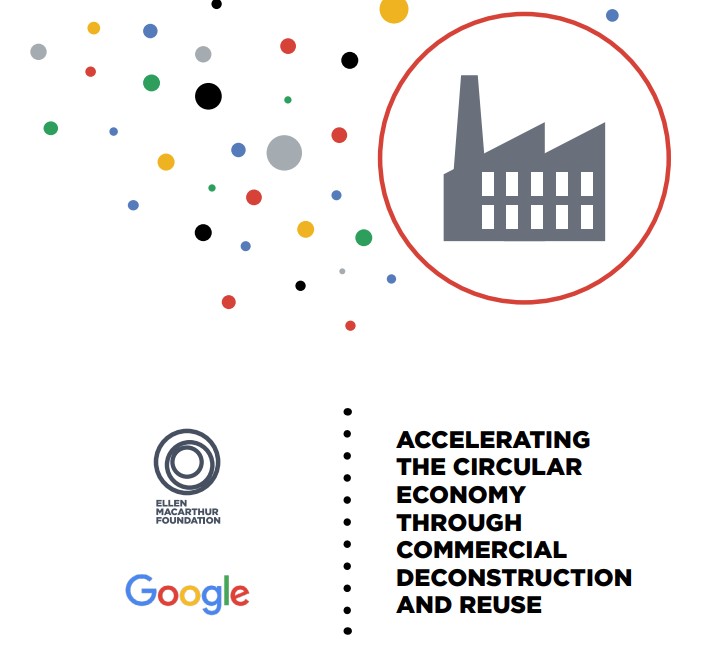Innovators and Entrepreneurs have been working on Regenerative Business principles for decades. The rate of innovation ramped up in the 1970s, after The Limits To Growth was published – but the first solar panel installation dates back to the 1880s..
Some key approaches have evolved that describe different features of Regenerative Business thinking. There are different development streams and different brands have developed around each principle, but we see these main trends:
1. Do well BY doing good
Design regeneration into your whole business model and all your operational departments, don’t isolate it inside compliance and responsibility.
What? All business initiatives should be expected to deliver social, environmental and financial ROIs.
Why? Fixing bad design is expensive and a whole lot of hassle.
You wouldn’t build a house without planning the plumbing and electricity – why would you plan a business in the 21st century without ensuring it has a positive relationship with its host ecosystems and communities?
Some people, approaches and movements you may recognise are::
- Paul Hawken and Natural Capitalism
- Michael Porter and Shared Value Economics
- Kate Raworth and Doughnut Economics
2. Design for “fully good, fully safe”
There is no “away” – the destructive consequences of the default 20th century extract/emit/exploit business models are multiplying – whether it’s child labour or ocean plastics.
What? Over time, design out toxic materials, damaging processes and exploitative practices. Product and services should be totally safe to make, totally safe to use and totally safe to dispose of.
Why? Driving off a cliff slowly is still driving off a cliff. So planning to be “less polluting” and leave “doing good” until “after we’ve made money” is simply bad design.
Planning to make things “less bad” can also stifle creative thinking and creates expensive products limited by current thinking and the law of diminishing returns. Hazardous Materials Handling and Occupational Health and Safety are expensive overheads created by toxic material usage.
Some people, approaches and movements you may recognise are::
- Bill McDonough, Michael Braungart and Cradle to Cradle Product Innovation
- Paul Anastas, John Warner and Green Chemistry
- Karl-Henrik Robert and The Natural Step
3. Close the loop on resource flows
Humans have been taking resources out of our host ecosystems and dumping our leavings back into it since the Iron Age.
What? All materials are either technical nutrients industrial systems should upcycle continuously or boilogical nutrients we can safely leave ecosystems to compost.
Why? Building systems that safely reprocess technical nutrients is far less expensive (over time) than endlessly extracting virgin resources from fragile, finite ecosystems.
Some people, approaches and movements you may recognise are::
- Boulding’s essay on The Economics of the Coming Spaceship Earth
- Dame Ellen Macarthur who founded a foundation for The Circular Economy
4. Service-based economy
Look beyond your products TO the service and value they deliver.
What? When people buy a product, they buy the value it delivers. People who buy air conditioners want to be cool; people who buy televisions want to be entertained. Streaming services have turned music and movies from products (tapes and disks) into services – it’s a trend increasingly supported through digital technology.
Why? For maximum profit, design better ways to deliver more customer value – not just cheaper ways to make the product. The strategic thinking required to consider value and markets can re-invent business offerings.
Some people, approaches and movements you may recognise are::
- Womack and Jones in Lean Solutions
- Paul Hawken et al in Natural Capitalism
- Chan Kim and Renée Mauborgne pull apart service and value in Blue Ocean Strategy
5. Biology and physics, not just engineering
In recent decades, the terms biomimicry and biomimetic (bio=nature, mimic=copy) have been developed to describe smarter approaches to product and process design. Velcro copies the stick-to-it design of grass seeds, the noses of bullet trains copy kingfishers’ beaks, enzymes offer new solutions to plastic recycling.
What? Biology and physics offer product, process and system design innovations that work at room temperature using renewable energy.
Why? Since the invention of soap and blacksmithing, our production systems have defaulted to using chemical and mechanical engineering to make things. They may work, but they’re often expensive, inefficient and toxic. The next generation of systems, process and product design are being inspired by how nature builds products and systems that work at room temperature using only renewable energy.
Some people, approaches and movements you may recognise are:
- Janine Benyus in Biomimicry
6. Systems Thinking and systems optimisation
Humans have been much better at making a single process more efficient than optimising systems – but there’s much more opportunity in enhancing systems effectiveness.
What?Making a single product or process “less bad” or “more efficient” limits your impact. “Sustainable” or “regenerative” depends on the systems within which something is produced, used and disposed of at end-of-life.
Why? Understanding the systems that produce our products and services opens up new opportunities for innovation, efficiency and productivity.
Some people, approaches and movements you may recognise are::
- Donalla Meadows and Thinking in Systems
- Peter Senge in The Fifth Discipline
7. Business dependent on ecosystems
Thought leaders have been concerned about the impact of human activity on the environment (at least) since Pliny the Elder deplored the destruction of shellfish beds to dye Caesar’s cloak purple back in the first century CE.
What? Designing business solutions that regenerate ecosystems is becoming MORE profitable than today’s destructive systems in the 21st century. The idea that we can drive robots around on the surface of Mars but it’s “too expensive” to recycle electronics is no longer tenable.
Why? No functioning ecosystems means distressed, disrupted communities which means fewer and smaller business opportunities. 1960s economic propositions that “the only duty of business is to care for its shareholders” are as relevant to the 21st century as vinyl records and flared jeans.
Some people, approaches and movements you may recognise are::
- Kate Raworth and Doughnut Economics
- Michael Porter in Shared Value Economics
8. Re-localise, right size and regenerate
The way to grow your business used to be to commodify what you do and push it out to your market, solving problems at a global scale.
What? Meet local needs from local resources, creating local jobs and regenerating local ecosystems – USING global knowhow.
Why?Global products delivered through global supply chains are subject to disruption, waste and expense. There’s a wealth of knowledge available online – much of it open source. So finding a niche and meeting all its needs can enable you to thrive.
Some people, approaches and movements you may recognise are::
- Womack and Jones in Lean Thinking
- Bill Reed and Pamela Lang at the Regenesis Institute for Regenerative Practice
9. Business that regenerates communities
Inequality is as much an existential threat to society and global warming. Business will not thrive in the long term if it exploits and disrupts the communities and societies it operates within.
What? Meet local needs from local resources, creating local jobs and regenerating local ecosystems – USING global knowhow.
Why? Communities and societies deliver key business requirements – workers, customers, education, services, infrastructure and public order.
What? Meet local needs from local resources, creating local jobs and regenerating local ecosystems – USING global knowhow.
Why? Exploitative business practices that generate poverty and inequality increase social disruption (and ecosystem destruction) over time.
Some people, approaches and movements you may recognise are::
- Gunter Pauli in The Blue Economy
- Paul Polman and Net Positive/li>
10. Aspirational, value-seeking, creative humans
Once their survival needs are met, humans are aspirational AND seek meaning and purpose.
What? Regenerative business engages whole organisations in innovation and opportunity and impact, powered from the bottom up by the opportunity to contribute.
Why?Innovation bubbles up from the bottom and creeps in from the sides. Command and control thinking limits innovation.
What? Regeneration is a driver for bottom up innovation and real engagement at all levels – staff, customers, suppliers and consumers.
Why? Exploitative business practices that generate poverty and inequality increase social disruption (and ecosystem destruction) over time.
Some people, approaches and movements you may recognise are::
- Gunter Pauli in The Blue Economy
- Paul Polman and Net Positive/li>
Which of these principles have you already discovered?
Regenerative business ideas have been percolating through business and society for several decades – and along the way generating substantial business ROIs. They’re not “complicated rocket science” – they’re a smarter leverage point for creating innovation and thriving business opportunities.
You may well be practicing them already – or have come across them as “buzz words” and wondered if they were more than a flash in the pan.
Learning enough about them to recognise the “everybody knows” mythology of the 21st century offer you 10 new lenses for seeking business opportunity.
(In the first 12 years of their regenerative business journey, carpet manufacturer Interface put $393,000,000 on their bottom line.)
These 10 key perspectives on Regenerative Business are discussed in detail in:
- The Deep Green Profit Insights free email course.
- The Better Business for Good Regenerative Business Training










